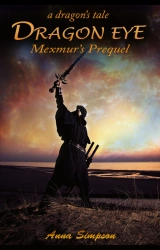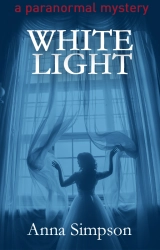This post was written for the Author Toolbox Blog Hop where we share our new discoveries on the craft of writing, editing, querying, marketing, publishing, and blogging tips. Posted every third Wednesday of the month. For rules and sign-up click here.
~~~oOo~~~
When I started writing, it was about escape. I’d leave my daily troubles behind me and visit a far off land with some far out characters. I never considered conflict or tension or any other writing convention.
I felt it was time for me to review building a basic scene. Many of you won’t need a refresher, but I did find some golden nuggets that might help any one of us.
“…scenes strung together like beads on a wire, with narrative summary adding texture and color between.”
A function of a Scene is to:
- move the story forward
- show cause and effect
- reveal dilemmas and consequences
- ensure the story is easy to follow
its Building material:
Paragraphs must not be ignored. Each starts with a topic sentence and is followed with sentences that add details, imagery, impact and emotion.
Each paragraph builds a scene block by block to its crescendo.
One Method of Writing a Scene:
1. Imagine the scene and let it play out. Do this several times increasing the tension between the players. Do not write a word until satisfied with the outcome. Make quick notes to capture the important points.
Look for the emotion driving the scene.
2. Using your emotion: Even if you’ve never experienced what is happening in the scene you’re building, there must be something somewhere that prompted a similar emotional reaction. Use it. Fill the pages not with your personal experience, but with the equivalent emotion that filled to you to bursting. This is not a time to hold back.
 An example: Everyone has lost someone in some way. In your scene there is a sense of loss. Pull from the moment you discovered your loved one rejected you/died/moved away. Imagine the moment building. Feel the feelings. Let those feelings drizzle out in the scene in front of you.
An example: Everyone has lost someone in some way. In your scene there is a sense of loss. Pull from the moment you discovered your loved one rejected you/died/moved away. Imagine the moment building. Feel the feelings. Let those feelings drizzle out in the scene in front of you.
3. Beginnings: As we do with sentences, changing length and style changes the pacing’s rhythm, some start organically. Many start at medias res, however, it is recommended to occasionally change-up the starting point.
Late starting points create urgency. Early starting point can create a slow burn. And jumping to a beat before the end can shock, surprise or incorporate the rule of cool.
4. Balance of action, narrative and dialogue. The balance of these elements engages the reader. However, balance is used loosely here. It may not be an exact split.
For example: A shouting match between two characters will lose its sense of urgency if its broken up with equal parts of description and narration.
*Inner thoughts—my Achilles heel—falls under this section. A personal reminder to me that unlike many authors that naturally include this, I must pepper my scenes with inner dialogue.
5. Pacing: short sentences for faster pace and urgency; longer ones for a more relaxed and slow burn. Whichever you choose keep it tight—no confusion, meandering, or overdoing it.
There is a perfect pace for each scene.
6. Endings: They can include disaster, a terrible/astonishing discovery, an unexpected chain reaction, unanswered questions or a straightforward solution. However, one player’s logical solution can easily become another’s horrific problem. Often endings take one step forward and two steps back.
This may leave an obscure future–with or without clear repercussions. The anticipated fallout encourages the reader to predict what may happen next. To find out if they are right, they must turn the page.
All Scenes Should Have:
- A clear goal (for each player)
- Obstacles
- Threat of disaster
- Outcome that urges the reader forward
Some scenes are weak. I suggest taking a hard look at whether any scene should be deleted, or chopped up and interspersed elsewhere.
It must be revised/removed if it doesn’t:
- Have conflict
- Built tension
- Have direction
- Move the story forward
- Contain an emotional impact
- Show believable motivations
- Change the overall situation
how to strengthen a Weak scene
Answering these questions may help:
- What is the overall purpose of the scene?
- How can the scene impact the narrative (subtle or not)?
- What players need to be included or excluded to create tension?
- Can changing setting (for example: marriage proposal moved from restaurant to seaside cliff) increase tension?
- What twists can the scene produce?
Anything you’d like to add? All comments are welcome.
Gleaned from:
- https://www.writersdigest.com/whats-new/10-ways-to-launch-strong-scene
- https://johnaugust.com/2007/write-scene
- http://terribleminds.com/ramble/2017/06/20/and-scene-some-thoughts-on-writing-a-scene/
- https://theeditorsblog.net/2011/01/30/creating-emotion-in-the-reader/
- https://www.writersdigest.com/writing-articles/by-writing-goal/write-first-chapter-get-started/how-to-balance-action-narrative-and-dialogue-in-your-novel












Good refresher. When writing fiction, I find I always have something I can draw upon for similar feelings. Writing fiction can be therapy.
That’s what drew me in. Now, its been years and feel pretty healthy. hehehe
Interiority is my Achilles’ heel, too! Wonderful post, Anna. Lots of good reminders in here.
Thanks, I plan to stick it up around my desk somewhere. It might just help me. hehehe
Great refresher! Sometimes we need to go back to basics when we feel overwhelmed with a project 🙂
Ronel visiting for Author Toolbox day: The One…
When I’m revising, I use the lists to keep me on task. It helps me sort out the rubbish from my first draft. 🙂
There’s so much great information here! I’ll have to return to this post again and again! Thanks for sharing.
What a nice thing to say. Thanks so much. 🙂
You’re welcome 😊
Wonderful tips. As a pantser I don’t think about all the individual moving parts of a scene when creating them. It’s been something I’ve had to go back and pay more attention to during the editing phase. Same with how I start paragraphs and such to keep the flow but not make it stale. Great post.
I’m glad you liked it. 🙂
As usual, a very useful and informative post. One thing I do before completing my books is to go back an analyze scenes. This will be a big help. Don’t ever delete your post history. It’s a great source of information!
Thanks. I’m glad to share. 🙂
All good points. I especially like seeking the emotion that drives the scene. I’m doing some of that right now, as I find boring scenes that shouldn’t be in my WIP.
This is one way to save it. 🙂
It never hurts to review what a scene should be. When I’m working on a first draft, I write at least one scene per day and then think about the next one.
Susan Says
Excellent advice. Thank you. 🙂
Another informative and important post, Anna. It would be wonderful if I could incorporate all these tips into my memoir. But if one scene follows the next at a fast pace, I think the reader will be thoroughly exhausted after 95,000 words. 🙂
The part I struggle with most is the “overall purpose” of many scenes, as part of my book is telling the story of our sailing adventures. It’s not always propelling the main theme/story forward.
I see your point. when disaster strikes, it’s time for a sequel. And that my friend is another thing all together. 😉
Great post, Anna. We always need to review the basic building blocks.
It stops me from thinking, ‘I forget nothing.’ 😉
I need to get better at pacing: Sentence length isn’t something I think about enough. Same with scenes being necessary. Sometimes I write scenes more to amuse myself than advance the plot. Great tips 🙂
We all do it and nobody knows our little secrets after we edit them out. hehehe
Like, it’s the final result that counts? Sometimes, just adding a little bit because we’re doing more than doodling, but not officially brainstorming (“doodlestorming”?), shows us something that we did not mean to put there, but looks good 🙂.
And it gives us something else to build on🙂🙂, and it helps us create more.
I do this too. So many ideas come from random things. Doodling is one of them.
Wonderful post. A purpose of a scene is to move the story forward, because it provides the moment and time when the characters can speak and act, which creates the story in the first place.
You got it! 🙂
Very timely advice, thank you. I’m in the process of organizing my previously written fragments into proper scenes and I can see me coming back to this as I work. Thank you again.
Knock their socks off! 🙂
This is a comprehensive review, Anna. Thank you so much. I’m a dialogue person and need to remind myself to include what everything means to my protagonist. Enjoy your weekend!
You too!
Thanks for the thorough discussion of scene writing. I know each scenemust move the story forward. So difficult t o strip a good scene but adds nothing to help tell the story. Painful but necessary.
Oh yes it hurts. I never delete…. just move them out of the story and into a holding pattern. 😉
Great post! How scenes begin and end is so important.
Thanks, Holli. 😉